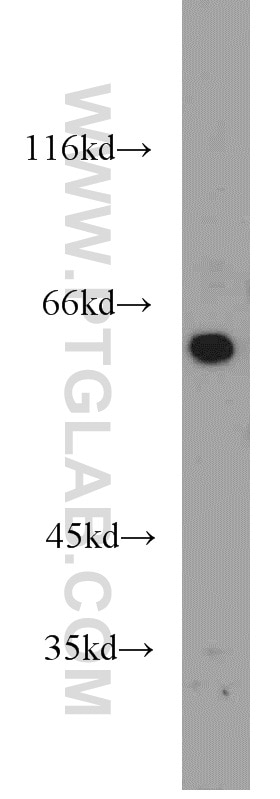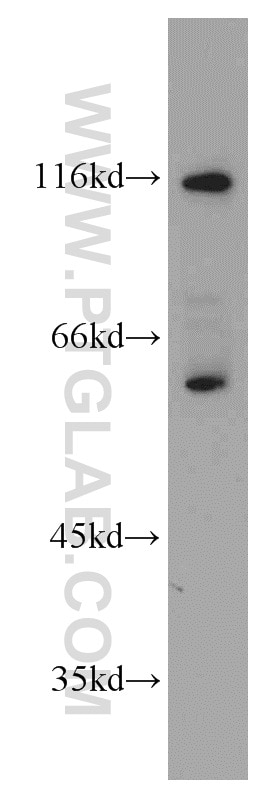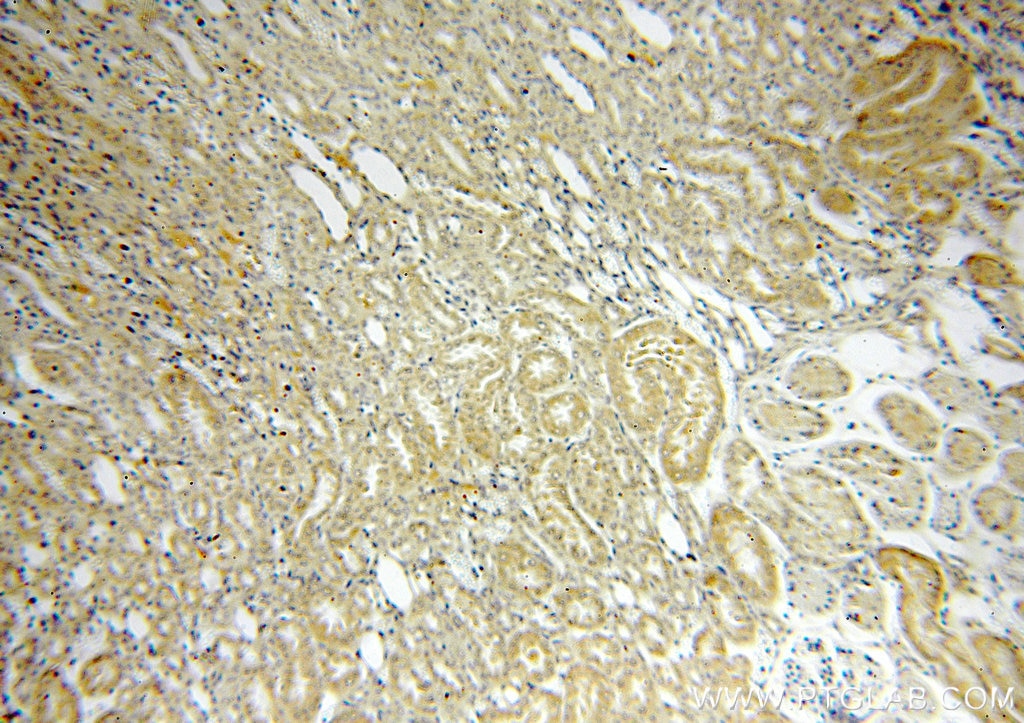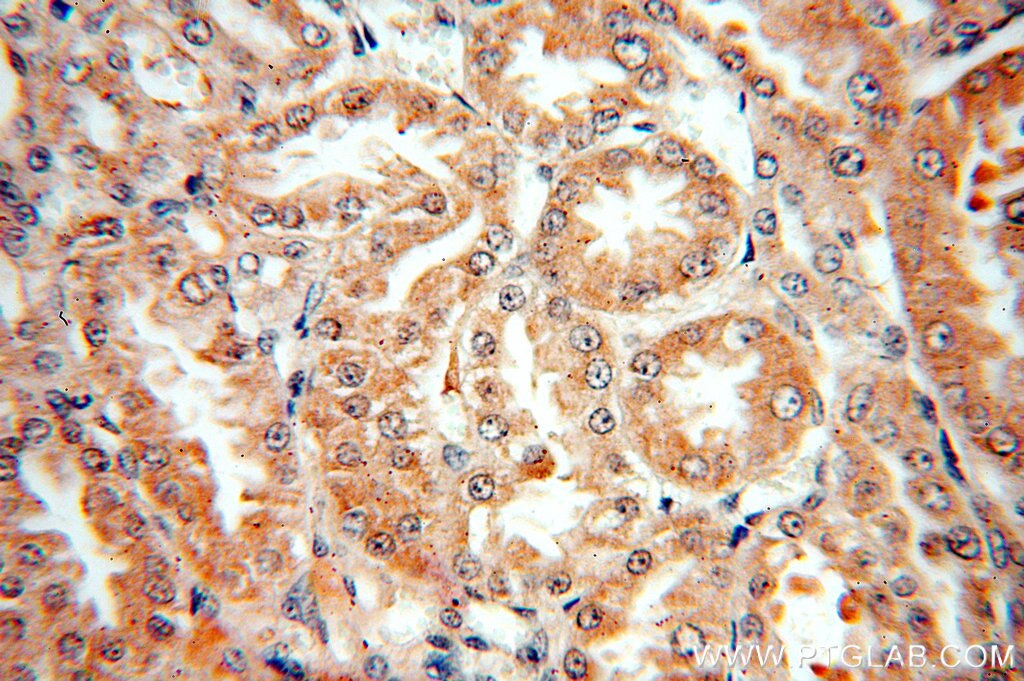Tested Applications
| Positive WB detected in | L02 cells, HepG2 cells |
| Positive IHC detected in | human kidney tissue Note: suggested antigen retrieval with TE buffer pH 9.0; (*) Alternatively, antigen retrieval may be performed with citrate buffer pH 6.0 |
Recommended dilution
| Application | Dilution |
|---|---|
| Western Blot (WB) | WB : 1:500-1:2000 |
| Immunohistochemistry (IHC) | IHC : 1:20-1:200 |
| It is recommended that this reagent should be titrated in each testing system to obtain optimal results. | |
| Sample-dependent, Check data in validation data gallery. | |
Published Applications
| WB | See 1 publications below |
Product Information
19195-1-AP targets CYP27A1 in WB, IHC, ELISA applications and shows reactivity with human samples.
| Tested Reactivity | human |
| Cited Reactivity | mouse |
| Host / Isotype | Rabbit / IgG |
| Class | Polyclonal |
| Type | Antibody |
| Immunogen | CYP27A1 fusion protein Ag7746 Predict reactive species |
| Full Name | cytochrome P450, family 27, subfamily A, polypeptide 1 |
| Calculated Molecular Weight | 60 kDa |
| Observed Molecular Weight | 60 kDa |
| GenBank Accession Number | BC051851 |
| Gene Symbol | CYP27A1 |
| Gene ID (NCBI) | 1593 |
| Conjugate | Unconjugated |
| Form | Liquid |
| Purification Method | Antigen affinity purification |
| UNIPROT ID | Q02318 |
| Storage Buffer | PBS with 0.02% sodium azide and 50% glycerol , pH 7.3 |
| Storage Conditions | Store at -20°C. Stable for one year after shipment. Aliquoting is unnecessary for -20oC storage. 20ul sizes contain 0.1% BSA. |
Background Information
Mitochondrial sterol 27-hydroxylase (CYP27A1) catalyzes oxidative cleavage of the sterol side chain in the bile acid biosynthetic pathway in the liver and 27-hydroxylation of cholesterol in most tissues(PMID:17088262). It belongs to the cytochrome P450 family. CYP27A1 catalyses an important sterol elimination pathway in the macrophage, and consequently may protect against atherosclerosis.
Publications
| Species | Application | Title |
|---|---|---|
Toxicol Sci Hepatic, metabolic and toxicity evaluation of repeated oral administration of SnS2 nanoflowers in mice. |









